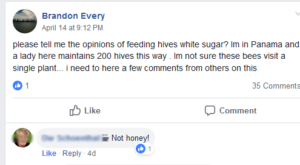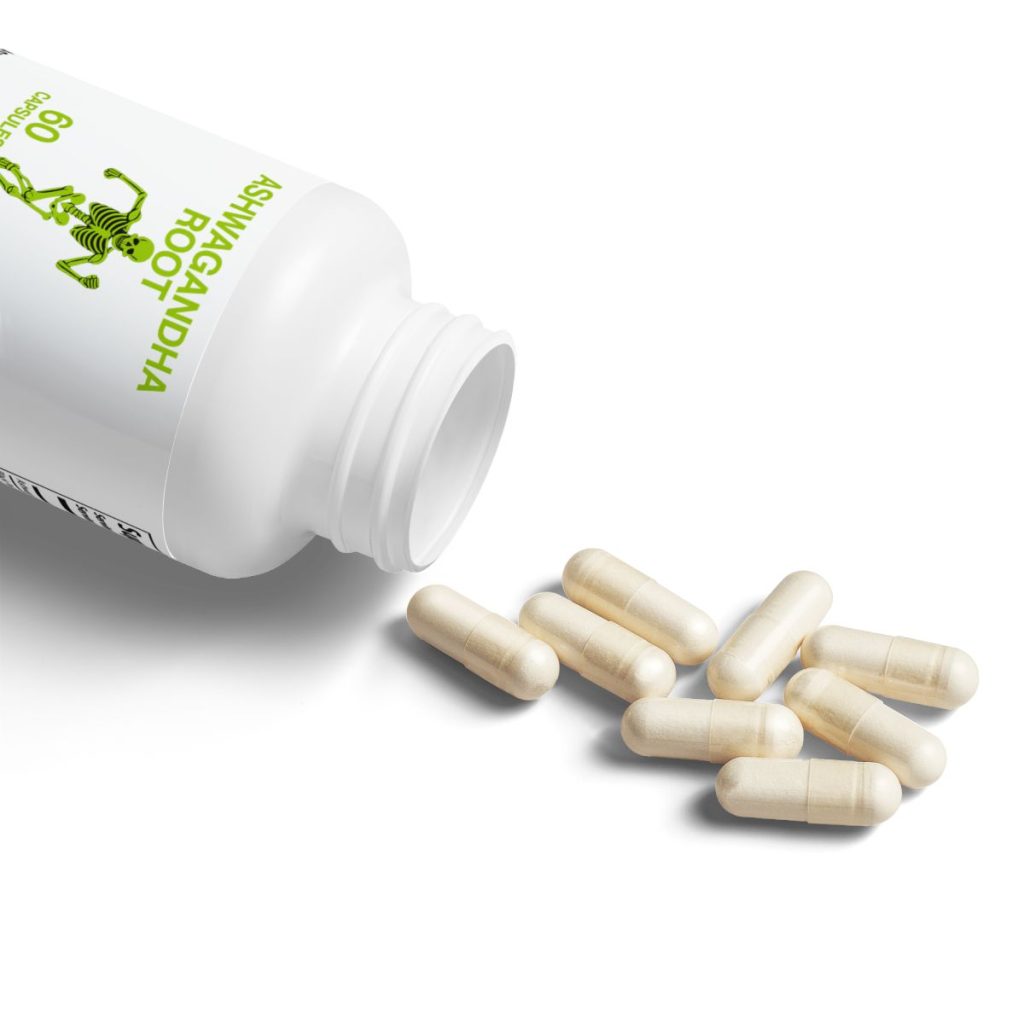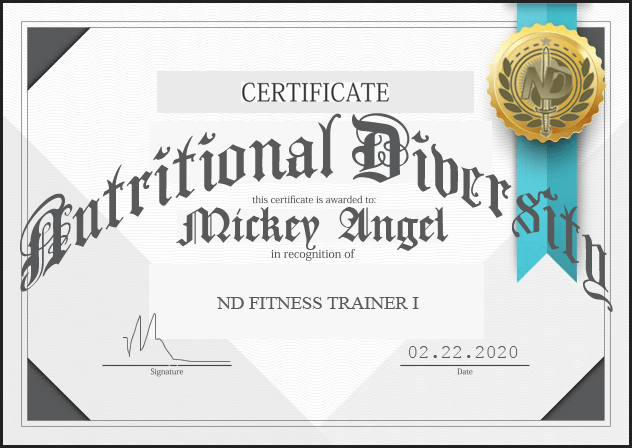Special Elements
Best Honey, Rankings, Side Effects, Benefits & Experience
The Best Honey is nature’s best medicine. Honey is said to prevent cancers, it balances blood cholesterol, assists arthritis, gives fast energy, and can be applied to wounds and burns for increased healing.
Simple application to the skin, which is the first field test of foods and oils; reveals obvious vitalizing qualities.
The important part of the best honey is that we use the really rare, strong, authentic product as close to a bee found in the wild.
This honey should be harvested very sparingly, and with great appreciation.
There are conscious farmers and not so. A very conscious farmer or conscious, manned apiculture (bee farm) will involve a deliberate, and diverse ecology to support the hives.
Most of the honey sold in stores is fake, at one level or another, and even in production bee highs, there are common practices such as “sugaring,” that are abusive and produce a low-grade product.
I am finding out we should choose the conscious route to apiculture we can learn so much from these bee guys, those who capitalize on only the right offers, and also on the threats they face, and I would say also from the good they bring never imagined my honey study to be such a potent thing. Although, it is this potency and strength that is how a person knows they are into something with value, richness, and … well, powerfulness.. right?
Bees are some of our earth’s principal pollinators, and without them, our very existence would not be possible. Their products are extremely valuable and extremely rare commodities. It is theorized by many scientists that hominids, evolved their brains searching out the energy-rich substance. Humans have been consuming honey for thousands of years. One of the oldest human paintings, is of a bee man, holding mushrooms – another theorized food of the evolved mind.
In Paraguay, the Native Ache people believe honey to be their second most important food following game meat. Honey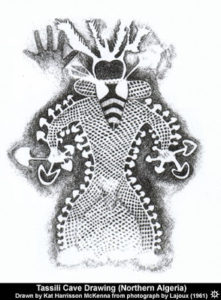 may be used to provide an Ache with up to or even more than 1,100 calories per day. Honey was reported to provide upwards of 80% of caloric intake in the pygmy people of the Congo. The Tanzanians were noted to consume of their caloric intake from the sweet syrup.
may be used to provide an Ache with up to or even more than 1,100 calories per day. Honey was reported to provide upwards of 80% of caloric intake in the pygmy people of the Congo. The Tanzanians were noted to consume of their caloric intake from the sweet syrup.
Here in Panama there are Melipona bees whereas much of their honey’s use is documented of, in the Peruvian and Colombian Amazon traditional folk medicine, where it is mixed with plant extracts and alcohol. Many here buzz about the medicinal properties that come from this Melipona bee. In total there are around 20,000 different species of bee-s in the world.
Baboons and macaques, use their hands and mouths to harvest honey from the nests of the 500,000 species of stingless bees. Orangutans, gorillas, and chimpanzees also like honey and bee larvae, often using sticks to extract the food from hives. The evidence is today right in front of our eyes, that less intelligent primates can procure the thought to be, evolutionary substance.
Thanks to now over ten years of COLOSS group research we are able to calculate better how many bees are lost each year, and the numbers are not as pretty as the insects or their products [1]. Bees are under major threat from modern agriculture chemicals and cattle intentioned land clearing.
Finding a good beekeeper, that has a completely non-fraudulent and quality product turns out to be quite the task. Finding one that takes the importance of their impact on the surrounding ecology would be a divine find, as honey bee importation to foreign areas disrupts other natural pollinators [2].
Throughout history, man goes to great lengths to get honey. Several cultures know the higher ways to locate natural wild honey such as following ´honey birds` to help locate the hives, that can sting a person to death. Brush could be burned near the entrance of the beehive to smoke out the bees, which disarms and confuses them to a degree. In Nepal, honey collectors climb bamboo ladders and put themselves in great risk to access the well placed wild hive. Rock art depicting honeycombs, bee swarms, and collection of honey dating as far back as 40,000 years ago. This buzz art has been found in Africa, Europe, Asia, and Australia.
Finding authentic non-abusive honey (see more below), is harder than anyone would likely imagine, and most honey in stores is flavored corn syrups and other fabrications. They do not hold any of the powerful essences, vitamins, and minerals, taken from real honey the right way. We have ranked the best honey and bee-related products to help users find the best honey and/or best bee products in a highly fraudulent market.
Let us look at the best honey Amazon has on delivery.
HONEY RANKINGS
1. Raw Texas Honey
This is hands down the best honey purchase I could find through vigorous research and my experience and familiarity with honey and bees.
The 12lb buy is at an excellent price for the value, the highest-rated product like it on the market, and through careful investigation, I found that these Desert Creek bee keepers are a model to follow in the world of bee keeping. Experts in ecology and not sugar feeders, this crew have their operation down to a fine science, product reviews verify sternly.
This is the honey I will order for my self right now after concluding this product research.
2. Stakich Farms w Royal Jelly
This company has been in the bee business since 1925 a source from Central Michigan comes is a 50oz and a 26oz container and is infused with Royal Jelly. Royal Jelly is another beehive product, that is produced for the queen as is regarded as a highly medicinal substance.
This product is also very highly rated by previous consumers, and the company is responsive to suggestions and questions and these guys have enough experience and time behind them, and their Kosher honey products to stand in the top rankings of the best honey. The price is right on the big buy.
3. Florida Wild Flower
Well rated and liked and in the big buy container, well priced this Florida based bee product is said to be of mostly orange blossom, which makes sense being where it is from. This orange blossom honey however is highly dependable, of natural sugar and I want it for my honey diversity mix.
5. Manuka Honey
Over 2k happy customers this manuka monofloral, honey is some of the best around. Recommend this honey to all my running guys. A tablespoon with lemon – coconut water, is a great water bottle or camel pack mix. Higher priced but well worth it, and over two thousand happy reviews.
6. Kiva Manuka
Over 800 happy customers, this raw manuka honey is some of the best around. With over 800 happy customer reviews. Manuka Honey is always worth it.
7. Ambrosia Honey Co.
This Colorado Company is new to the market but quickly impressing customers.
8. Solimo Wild Flower Honey
The thing I liked about this honey is the combination of U.S., Canadian and Argentinian kinds of honey, and this diversity covers more. I ranked it for its satisfaction guarantee, the free one-day shipping, and the satisfaction rating in a smaller bottle for occasions when folks may be on the run and just need a travel-sized bottle delivered quickly.
HONEY BENEFITS
Honey helps the digestive system digest other foods better, and so do papayas, which are great with honey, and a dash of cinnamon makes for an ancient healing remedy and nice dessert tasting snack that will energize. Honey inherently saves the body from having to make enzymes, a process that depletes energy. Honey and papaya together could allow athletes to digest more nutrients more effectively and efficiently. Add in some avocado and mushrooms, a diversity of selected other ingredients, and your really off to the races. Basil and turmeric are other favorite honey soaks.
Honey is packed with vitamins and minerals in already highly soluble forms such as 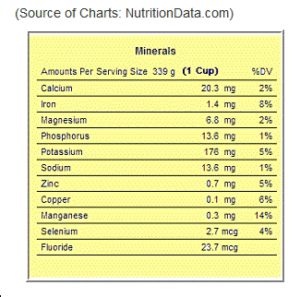 vitamin B6, thiamin, niacin, riboflavin, pantothenic acid, and certain amino acids. The minerals found in honey include calcium, copper, iron, magnesium, manganese, phosphorus, potassium, sodium, and zinc.
vitamin B6, thiamin, niacin, riboflavin, pantothenic acid, and certain amino acids. The minerals found in honey include calcium, copper, iron, magnesium, manganese, phosphorus, potassium, sodium, and zinc.
The golden blood-blood builder honey is also one of the most potent cell protection and anti-aging compounds on the planet. Certain studies indicate cellular regeneration resulting from honey, it has also been clinically evaluated as a cancer cure [3].
Traditionally, honey is used in the treatment of eye diseases, bronchial asthma, throat infections, tuberculosis, thirst, hiccups, fatigue, dizziness, hepatitis, constipation, worm infestation, piles, eczema, healing of ulcers, leishmaniasis, atherosclerosis antibacterial, anti-inflammatory, antifungal, antiviral, and antidiabetic effects. It also reports immunomodulatory, estrogenic regulatory, anti-mutagenic properties [4].
Loved by all and especially the little ones (over the age of 8) pure honey promotes optimal sleep, and great physiological recovery at night for better immunity and energy.
Honey even contains an enzyme that produces the disinfectant hydrogen peroxide when it touches a damp surface like a wound [5].
[6,7,8,9]HONEY SIDE EFFECTS
Honey healing and honey harm are often in the dose and too much money would not be a good thing and could lead to nausea, headaches, bowel problems, and other abnormalities.
In my experience, a slight head buzz is the lifetime indicator that too much is being consumed. Topical use makes up most of my intake just at my own preference, but I would say two tablespoons within a four hour period is around about a good limit.
HONEY EXPERIENCE
Sadly this is a point in the food tour that it is important to bring out some serious threats and frauds in honey products and in general modern food production. It is vital that we understand these problems in order to form new, better methods and food sources that don’t have these issues.
One of the most important topics in the modern honey talk is the source and authenticity of the honey. Conservatively, 90% of ‘honey’ found in bottles on the planet is not honey, it was not made by bee’s nor is it as sweet or as healthy as honey. Corn syrup and other sugar sources are labeled as honey, and the resemble honey to a degree enough that no one says anything. It is not honey, it will not give the benefits that I describe in this section.
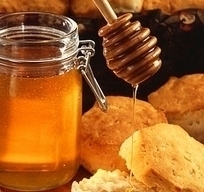 Then we have the other ten percent available in bottles, that is made by bees. This you are going to get from a small caring operation. On my mission to learn about the wondrous little guys, I was surprised to find that some people are very good at looking like a genuine caring operation while running yet another of their scams in the world of honey products. Most don’t realize we have to look at personally, how a particular bee farming operation is run to know if we are getting the right stuff.
Then we have the other ten percent available in bottles, that is made by bees. This you are going to get from a small caring operation. On my mission to learn about the wondrous little guys, I was surprised to find that some people are very good at looking like a genuine caring operation while running yet another of their scams in the world of honey products. Most don’t realize we have to look at personally, how a particular bee farming operation is run to know if we are getting the right stuff.
My first and favorite bee teacher, and the only mother for me, Mother Nature herself led me to this study because after studying ecology and permaculture for a while, you naturally want to learn about all the creatures on your farm. I would trip out on how I would plant something new and a bee I never saw before would show up. I started to realize there were a lot of different things in the jungle density that backs our farm for miles, that I wasn’t seeing because my permaculture does not have things they like. So I have studied bee culture across several varieties now for 4 to 5 years. My first human beekeeping teacher was in Costa Rica in 2013, an authentic young man named Stephan, who was also my first Bio-dynamic Agriculture teacher, really wrapped my head around it like no one else could have I was very blessed to have met him and taken his class. His lessons were almost purely on the relationship between us, the plants, and the rest of the cycle of life. Direct, confrontational honesty is what nature gives, and this teacher as well, a man who has floated from farm to farm for years, drastically upgrading them with his invaluable knowledge and instruction, and relationship with nature.
HONEY DISCUSSION
Honey bee farming could pose threats to the balance of pollinators and there should be important attention to supporting other insects as we support honey bees, and supporting specific ecology for the bees and their possible domestication. For North America it’s been theorized the honey bee’s import from Europe and its popularity in contrast to other pollinators threatens those pollinators. To address this concern creating the ideal environment that attracts feral pollinators in a plant and possibly flower-rich permaculture should be the focus of apiculturist hopefuls. In fact, an expansion of field and title, to something like pollination specialist or permaculturist would do the ecological spirit in man some good.
Crack them out with sweet white sugar, they have no idea the outside world, they never even visit it.
Then a few years later I went to video-document some beekeeping in Panama with a different ‘apiculturist’ if one can call her that (I won’t mention names) to share the interest with some little ones back home in a permaculture for kids show pilot. I witnessed an operation who fed a couple hundred hives bleached white sugar every 11 days, to hook and domesticate them beyond the golden rule, to pump out as much honey as possible without giving these hive sites any plant ecology at all, most of them were on cow pastures. Of course, this honey is just white sugar converted to a syrup by a pissed off, aggressive, addicted to the worst product there is a bee, who will generation-ally become smaller and weaker and more accustomed to the refined chemical slavery in which it is cultivated.
Nectar, dew drops, and honey itself provide bees with carbohydrate energy to fly to pollens which provide micro-nutrients to include vital sterols, proteins, fats, lipids, and minerals. Omega 3 fats also help the bee learn, and adjust to environments, or migrate. The diversity of plants visited by these bees is unrecorded in its entirety and I would imagine the possibilities are endless. The amazing hives are able to find resources to balance their diets, should they come off balance, and should they have had sufficient nutrition to support actions and learning needed for such change.
I have thought over and over plans to start hive sites, and each time the first stuff I am looking at and concentrating on, is the plants they need. I would gather and have those at the site first. This white sugar is to them as it is to us, unhealthy and addictive, and this process she sells under the guise of a “rare” and real product, in a fancy front end store, complete with a museum supplied by catches from the wild, caged in a 50×50 foot space, where at least this time they poor creatures have plants they like. A ten to thirty-five dollar per person tour complete with a cafe to spend some more in some of the more lucrative real estate in the area. It was also very interesting to get to know a completely subservient, small army of older otherwise unaccomplished workers kiss her butt for next to no money, together with accomplish the work of one good farmer, and all except two of ten of the total staff, lie and cheat and steal, pretty consistently on an everyday basis! The hereditarily wealthy enough not to fail if she tried to, a clown in charge with a botany degree, is just another show of how Universities are churning out miseducated and programed harms to nature, who do not listen to nature people because they know better,¨from all their hours in a classroom.
Later I learned this is probably how she learned, and the practice is very widespread here in this country, and the rest of the world also. I never imagined to find this particular step in the game. Just after this shocking experience, another rich farm owner made false promises to me to do apiculture the right way with plants even some roofed ones to make sure even with harsh rains there is pollen and nectars available to the bees by natural foraging methods. For these rich, with all the resources in the world to put together a solid, real operation, I find many times just want free information, free work, and to be f-ing over people, plants, bee’s and wildlife, man times over for seriously trivial gain!? They often seem to not even use the information they extract this way, but just sort of feed their ego by being someone who knows it.
I have put off the local Africanize honey bee studies off for the moment, but it remains a prying interest, and the disappointing but educational experience was a reminder that many people in every field even bee keeping, lack the honesty and genuine interest in nature, who instead have plenty of interest in feeding themselves, rather than actually doing something cool. It’s not hard to feed an insect sugar, and then sell it coming out the other side in a few months at upwards of 1200$ a tank, so a lot of people just do it this way where nothing is ever actually pollinated, and the product is not honey from a diversity of plants like in a wild hive. Let me tell you, authenticity, courage, honesty, integrity, and accuracy are some of the most important factors to a solid relationship with nature and to a winning team alike. All of which this operation was lacking.
Wisemen should have told me just how much rich people who own farms, like to try and take advantage of anyone they can, like the idea of slaving they are many times full of false promises and false advertising. This particular farm owner told me how she was “getting ready to impose a draconian law on my volunteers,” who paid her a daily rate to work and “learn” on her farm. After I taught her to make a powerfully effective and tested fertilizer for her coffee plants and how to diversify her farm into a permaculture, she ignored all of this and continued to use the same chemical spray that everyone uses, provided by the chemical agriculture markets. The lady was just a lying conquistador, even trying to steal a small local’s land bordering hers and his cumulative work of ten years in a permaculture-like format so that she could add parking for her scam center. And listen I am game, but if you are going at something that way, it should be to take from the big guys, you don’t step on and take from the little guys, that’s unacceptable.
This lady, like plenty of farm owners down here for some reason, has a huge narcissistic complex that runs rampant throughout humanity as a whole today really. Anyways it is not absent here in Panama and it is for seeing this type of thing all the time too that I am in the jungle most of my days kicking it with the plants. I asked her recently while in her area if I could grab two plant clippings (only cause they were close to me at the time), for a diabetic patient, of plants I originally brought to her farm, she said she would only trade for new species. Of course, this idea itself and want of new species is an idea only important to her because I taught her about it. Not exactly the hook it up and it will hook you up mentality. We don’t have a Wiseman culture anymore, our old schoolers are not looking out for us anymore they seem like nowadays they are looking to get us. I’m about someone who I could give the old-schooler title too and I’m only looking to help out the young bucks running around. But maybe the older who care so much have always been rare. I can’t call it on that one.
Sourcing
Sourcing all has to change with the Nutritional Diversity diet, and boy does it ever with honey. We cannot afford to allow the mistreatment of the bee’s, of the cycle of life by supporting companies who do hurt them and us with various forms of chemical warfare. We must by-pass the industry and find a loving contact who has a valid and genuine relationship with the bees.
When you finally find it, help your friends out with this info, and this source for nature’s best medicine, it is a great thing to do. Even for us here in the tropics, it’s hard to find, and when you think you have, make sure you inspect. When it comes to this liquid gold, there are a lot of fakes out there, and these selfish people threaten our entire well being. To have some real stuff may be a matter you can take into your own hands, even if you don´t own land. I think the best idea is a from a little speech I give to people sometimes, called the hook it up speech, which basically means if you hook up something, it´s likely to reciprocate so hook it up good and if its a loss, you did something for life and in time one will realize how much of a loss it was not. So, maybe an idea could be simply to get your protective gear together, go into nature, and hook up the bees.
This bee finding, means also that you can get pure bee pollen, propolis,, a gum which many claim to be also very healthy and royal jelly. I use all of this regularly. I hope to establish my own sites in the next few years.
HONEY FAQ
Q: Why is it so important to source good honey?
A: Because of the products on the grocery store shelf labeled honey are not 100% authentic honey, therefore you will receive the benefits attributed to honey.
Q: Maybe I need to stop watching Mike Tyson documentaries, fanaticizing about golden mentors from the sky?
A: It is the mark of a great fighter when he has character plus skill. Because a fighter with character and skill will often rise and beat a better fighter because of this. Character is that quality upon which you can depend under pressure and other conditions. Character makes the fighter predictable. Character helps him win. – Cus D’Amato
Q : Who can´t recognize this lion trainer, and the good he helped come out of the bad?
A : Listen, generally, If you want to be right; you don’t own plant species, bees, or land – you thank the Great Spirit for these things and you don’t take what you don’t need. If you have extra share it with someone who doesn’t. Treat them with love and respect or leave them be. Do your part as pollinators do to protect and procreate our beautiful natural world, and the only REAL way you help yourself is to help others. You do your best to manage within a money based world, remembering the golden rule as your guide, trying not to enslave, torture or hold captive any living thing. I tell you the conquistador thing is out. The free spirit is in. Like antibodies, or some kind of natural defense mechanism, there are people like myself on the planet, that are going to give these abusive rich people who use chemicals and mistreat creatures, what they are asking for, and this culture I describe is now much bigger and more powerful than the conqueror of old, or the liar or the control-freak that holds living beings captive to reap as much from them as possible, thinks. Just wait. …or maybe I am just crazy – and humanity continues to devolve.
There is a dynamic principle in play. Some people still don’t understand how cutting corners is just cutting yourself and what your doing. After they have to do it over and over again they eventually learn to do it right the first time. Truth always comes out, everything you steal, you will pay back, and the best rewards for you will ever receive come through helping other people. If all you do is treat things badly and use them for your own temporary or immediate gain, in the long run, you will realize you cost yourself everything you could have had and will likely not have much that is really filling and of real richness. The happiest fullest man is the one who gave his all, did his absolute best, and helped others and was authentic, honest, and accurate to those around him. This is how a person earns REAL RESPECT.
This being said..
“Great spirits have always encountered violent opposition from mediocre minds. The mediocre mind is incapable of understanding the man who refuses to bow blindly to conventional prejudices and chooses instead to express his opinions courageously and honestly.” – Albert Einstein
“Every great thing that has happened in my life has come through helping other people!” – Danny Trujillo
I think this is all really important to learn about these aspects from the bees and those motivated by their liquid gold. I realize there are a lot of harmful acts, that we do to them, that we also do to ourselves, and we see similar genetic damage. We can surely encourage our beekeepers to do it right hopefully (inspect!), and where there are people doing it wrong, there is a great need and opportunity for someone to do it right.
Q. How is honey formed?
A. Bees produce honey from the sugary secretions of plants, called nectar or from secretions of other insects, by processes like regurgitation, enzymatic activity, and water evaporation.
Q. What is the sugary content of honey?
A. Honey sweetness primarily derives from the monosaccharides fructose and glucose.
Q. What well known nutritional properties do honey possess?
A. Nutritionally, 21 grams of honey comprise 64 calories and 17 grams of sugar, including fructose, glucose, maltose and sucrose. It has no fiber, fat or proteins.
Q. What in particular does honey excel in a nutrient-packed food item?
A. Honey is rich in its content of bioactive plant compounds and antioxidants.
Q. Is honey a good source of antioxidants?
A. Honey contains a number of antioxidants, such as phenolic compounds like flavonoids.
Q. What good are these antioxidants doing to our bodies indeed?
A. Antioxidants have been known to lower the risk of heart attacks, strokes and certain types of cancer. They are also effective in the upkeep of our eye health.
Q. What other effects do the antioxidants have on our system?
A. Honey contains antioxidant compounds that have been recognized to reduce blood pressure. There have been laboratory studies that have shown modest reductions in blood pressure from consuming honey alone.
Q. Can consumption of honey help in reducing cholesterol level?
A. One comparative study of honey and table sugar has determined that honey caused a 5.8% reduction in LDL, a bad cholesterol and a 3.3% increase in HDL cholesterol, a benign cholesterol. Overall, honey has a positive effect on cholesterol levels.
Q. Does honey help combat type 2 diabetes?
A. Triglycerides in the blood are also associated with insulin resistance, a major causing factor of type 2. Several studies show that honey can reduce triglyceride levels, particularly when used as a sugar substitute.
Q. Does honey pose any benefits to our heart?
A. Many of the phenols and other antioxidant compounds contained in honey increase blood circulation to your heart and lower the risk of blood clotting.
Q. Is honey good for wound healing?
A. Honey applied to skin topically has been traditionally used to heal wounds and burns. Honey is also an effective treatment for diabetic foot ulcers.
Q. What do researchers believe as the reason behind the effective way honey heals wound?
A. It has been suggested that honey possesses a host of antibacterial and anti-inflammatory effects in addition to its ability to nourish skin tissue.
Q. Could honey help in respiratory problems experienced in young children?
A. Honey can act as a natural and safe cough suppressant over the age of one.
Q. Which countries yield most honey production?
A. In 2018, worldwide production of honey was 1.9 million tonnes, championed by China with 24% of the global total. Other major producers were Turkey, Argentina, and Iran.
Q. What exactly is honeydew?
A. Instead of gathering nectar secretion, bees can salvage the sweet secretions of aphids or other plant sap-sucking insects, generally known as honeydew.
Q. Are there precautions for the use of honey?
A. Honey should not be fed to children under the age of one due to an elevated risk of botulism.
Q. What forms of honey are available commercially?
A. There are various, some of which are listed below: crystallized honey, pasteurized honey, raw honey, strained honey, filtered honey, creamed honey, dried honey.
HONEY RECAP
Miracle medicine from natural doctors.
Many shades of fake, one all the way true honey.
Life lessons seem thick and clear in the pursuit of bees, bee knowledge, and beekeeping.
Lesson number one is be curtious and respectfull of all life.
Lesson two, is don’t believe what you don’t know or see yourself.
Just give me the best on Amazon!
RELATED MATERIAL
- ACTABIOLÓGICACOLOMBIANAActa biol. Colomb., 18(3):415-426, Septiembre – Diciembre de 2013-415DIVERSIDAD DE ABEJAS SIN AGUIJÓN (Hymenoptera:Meliponini) UTILIZADAS EN MELIPONICULTURA EN COLOMBIA
- Newsweek
- Smithsonian
- Forbes
- Permies
Give us more and we give you more..
[et_bloom_locked optin_id=”optin_4″]
Beekeepers over the years have come to a standard hive, and construction and care system that is found throughout the world. Bee wax templates, hive plans, suits, and smokers are all professionally produced and can be ordered easily online. Bee hormones are also easily available can be used to initially attract them to the hive.
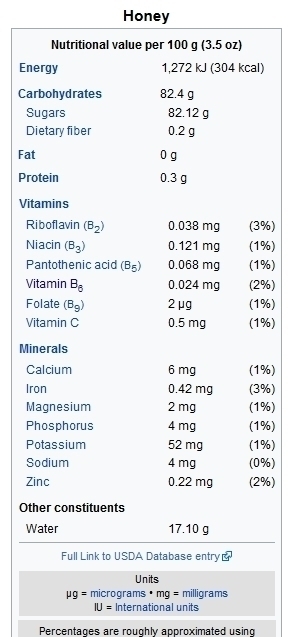 It may be expensive, and for me at this time, it is, but it is well worth it to me to have pure honey in my system on a regular basis to support smoother assimilation and digestion of nutrients, as I mentioned previously using papaya and other digest aids, within my higher diversity, my higher performance, human optimization model.
It may be expensive, and for me at this time, it is, but it is well worth it to me to have pure honey in my system on a regular basis to support smoother assimilation and digestion of nutrients, as I mentioned previously using papaya and other digest aids, within my higher diversity, my higher performance, human optimization model.
Use
I mostly use honey during training times, and ease up on it after three weeks, during each yearly quarter.
I do a little cacao, honey, snacks throughout the day for a few weeks, and then I add in pollen into the routine. Then a few weeks later cycle off the cacao. A few more weeks, I cycle off the honey. I continue to put a bit on my skin and hair while training simply cause it helps to keep from skin splitting and hair out of my way. I often mix with jackfruit cream, mango juice, or coconut oil.
Bee Pollen
Bee pollen is the food of the young bee, and it is about 40% protein.
It is considered one of nature’s most completely nourishing foods. It contains nearly all nutrients required by humans.
Around half of it’s protein is in the form of free amino acids that are ready to be used directly by the body.
Permaculture Bees
Theoretically, we can propagate everything best, by propagating bees, and birds, and squirrels, and a few others. Keeping bees is a strong move in Permaculture for you, for your family and for your farm.
Keeping a diverse range of bees and other pollinators through a method as close to natural as possible, on your farm should be as simple as having the plants they like, lots of them, and maybe a nice house. There is a hormone or their honey that can be ordered online to attract them. Canopy or shelter for certain ecology that the particular bee favors can be employed to ensure nectar’s and pollens are present even in times of heavy rainfall. Honey harvested in small amounts is acceptable throughout the year, while large harvests will likely inspire the wrong practices for pollinators and their nutrition.
If supplementation is to be used for specie, the supplement should be as close to complete nutrition as possible, to include the essentials in their normal diet. It is surprising to me how underdeveloped this supplementation is for so many, even small bee operations.
To Bee or Not to Bee :
Too much honey-like too much sugar is not so good right now coming off the standard American diets. I recommend no more than 3-6 tablespoons in any given day. Any honey is too much for a baby.
Bee’s and their master craft are King’s of nature and they should be respected as such. Bee’s are being killed off by the thousands, by the chemicals associated with mono-crop farming systems.
Save bee’s by cutting out the demand for supermarket products, by teaching your circle of acquaintances and friends about these chemicals, and how we are all better to support a small farm. It’s going to help this conversation, help your family, and help you to have made a connection with a small farm. To boot you can make a small farm connection hopefully who is also a beekeeper, and become involved and supportive! Finally just to give the ideas, you can slowly but surely do your own farm, even a small one. You can go in nature and just do it.
Many species or all species of local bees could be an integral part to a farm and are not dangerous to the family. I myself love those times where you bring a new plant in and a new bee or butterfly shows up you’ve never seen before, showing you who likes what. I think you want to start with the plants and hope for the pollinators to come. While hormones or honey can be used to help them come into a farm, try to get them without this first, just for learning´s sake. Butterfly´s and other insects are fun to learn with and
I daydream of guerrilla permaculture sites with a bee integration, I wonder how nature would duplicate in the area what is brought in. That could also fuel a plant repopulation effort like no other. This is exactly why mycology is my next thing because I think if you can design a permaculture installation considering pollinators and fungi, you could sort of creating something that would really want to duplicate quickly.
Speaking of wise-men, and correct pollinator farming using plants as their eventual primary food source; Morgan Freeman an elder voice in our time, recently created a model commenting on the Jimmy Fallon show that “There is a concerted effort for bringing bees back onto the planet…We do not realize that they are the foundation, I think, of the growth of the planet, the vegetation.” He says he is having people help him get things together and are planting so far magnolia trees, lavender, clover, that they had in their original Arkansas area.
The sugar water mix feeding, is the go-to emergency or winter month mix for most apiculturist these days. He mentioned that practice is something he employed at the beginning. This should be a transitional practice, someone doing this for years on end is just abusive.
The better news while he does have plans to import plants for these guys, he does not have any plans to harvest or touch their honey. Ethically honey can be removed in very small amounts, unfortunately, these ethics are rarely practiced. The excuse that it rains too much is given, but really the absence of adequate permaculture is the issue that exists as most of these hives are located on cow pastures. These hives will be harvested for the tank after tank of honey if you can call it that, to be sold at expensive prices without its clients having any knowledge of what’s really happening with this fundamentally empty product.
Central America remains a great destination for the bee sanctuary, without winter and things like the Colony Collapse Disorder (a title given by the EPA) of domestic hives having trouble surviving cold weather in domestic sites like Europe and North America is not an issue.
Ultimately, I feel that a more ethically man-managed world network of plants and pollinators and various fungi could potentially be the most important and fruitful endeavor of the decade following 2020. The study, be it composed of individuals with very deep relationships to wild nature, could cultivate new amazing, nuclear-style organic reactions that could enrich our world infinitely. We must take this study and practice just like every biological study and practice away from the modern University / Agriculture industries, and give it to the alternative practitioners who have not been using the machine and chemical dependant farming model.
There is an enormous business model, need, demand, and reward for ethical, authentic bee sanctuaries and real honey products, harvested ethically and dynamically. There is likely a lucrative need for a listing of both false and genuine operations and inspection services to see them. I would gladly pay double or work my heart’s passion out into something tradable for a divine master honey product. I could drink a gallon of white sugar or its syrup clucked out of a chemically retarded abuse victim and feel like garbage. A few drops of real honey will make me feel on top of the world. Most people have no idea, this difference, and likely have never enjoyed the real deal. Eventually, our video work hopes to showcase some, and there are many genius people out there really doing wonderful things in this.
In this interest and of course interest in the Nutritional Diversity Diet we have started our ND WORLD Network and loaded in bee culture focus forums.
Originally Published on: Mar 14, 2017, Updated April 19, 2019, September 11, 2019.
[/et_bloom_locked]I have said it much, but why was their not mango trees, and other permaculture items not lining the road all the way here, or was there?
Agriculture
NUTRITIONAL DIVERSITY SUPPLEMENTS
ND Supplements
Best Ashwagandha Rankings, Benefits & Experience
The best ashwagandha is one of the most famous and central of Ayurvedic herbs, and for good reason. The odor of horse (‘ashwagandha‘ translated). Withania somnifera, known commonly as ashwagandha, Indian ginseng, poison gooseberry, winter cherry, or urine of the cows, is a plant in the Solanaceae / nightshade family.
Ayurveda, roughly translated into “Knowledge of life”, if which the magic herb is center in therapeutic measures to boost physical, mental, social, and spiritual harmony in order to improve the total quality of life. [x]
Several other species in the genus Withania are morphologically similar, which means at a microscopic, or not level, the anatomy or structure of the plant closely resembles that of other plants, in this case in the nightshade family.
The tomato is of the nightshade family. Cucumbers and peppers, too. ND normally goes very light on nightshades; peeling and de-seeding are very important with them because of the ‘lectins’ they carry. These lectins are proteins that act as splinters to sugar molecules that together create toxins that dull performance and cause signs of aging. The *could be bypassed by leaf-only consumption.
There are many a processes involved with eating from the garden, and they should be. It is like a video game after a while, trying to find the hidden way and unlock the power of nature and her armada of trillions upon trillions of species that work together as a divine organ playing the tune of life. We will never understand it all in this lifetime.
Ayurveda is the oldest surviving written system of healing and optimization. Popular herbs in today’s culture, such as the popular 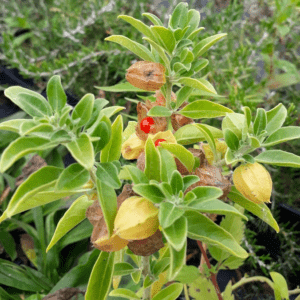 root of turmeric or cousin ginger, are two other plants of the same family with similar morphological benefits.
root of turmeric or cousin ginger, are two other plants of the same family with similar morphological benefits.
The ND Sciences Group has been using each of them for temporary use treatment, not for regular use treatment.
The use of the best ashwagandha in Ayurvedic medicine extends back over 3000 to 4000 years to the teachings of an esteemed rishi (sage), Punarvasu Atriya.
It has been described in the ancient principle sacred texts of Ayurveda, including the Charaka and Sushruta Samhitas.
Ashwagandha is also used as an “adaptogen” to help the body cope with daily stress, lower blood pressure and as a general tonic to improve immunity.
Many don’t realize that when certain plants are used together they can unlock a new level of effectiveness.
Oftentimes these ‘together’ effects can be unlocked through the use of other plants such as the best hot peppers, other peppers, and black pepper.
Withania somnifera has been a principal ingredient in many herbal remedies and green juices, throughout time.
Let’s check out the best ashwagandha we can order up today and get it into our system tomorrow!
ASHWAGANDHA RANKINGS
BEST ASHWAGANDAH BY NUTRITIONAL DIVERSITY
ASHWAGANDHA BENEFITS
Treats Alzheimer’s and other neurological conditions, effects of HIV. [1,a]
A maximum stress relief agent, [2,a] and even a sleep-inducing aid. [3]
Striking antioxidant properties are contained in the miracle herb. [4]
Like the best gotu kola, the herb acts in many ways as a brain cell protector, displaying anti-cancer actions and compounds have neuroprotective effects against glutamate insult, a potential that may serve as a great supplement for brain health. [5,a,b] Also as a strong general anti-anxiety and oxidative stress reducer [c]
Anti-cancer activity is a main study of the best ashwagandha herb, and has been known as a cancer medication for a long time. [6,a,b,c] Key essence known as Withanone.
Hello ladies, the abracadabra vowel arranged herb enhances sexual function, atop all these other things. [7] The shrub has enhancing effects on the reproductive system overall. [8]
Also like gotu kola, the best damiana and many medicinal shrubs of her type, ashwagandha can be helpful to insomnia and nonrestorative sleep (NRS) issues. [9]
The Ayurveda staple even helps regulate correct body weight. [10]
Important brain activity changes have been noticed and evaluated in a really interesting study whereas mice were dosed with Scopolamine, an alkaloid from the Datura flower I have a little experience with that of many things that cause amnesia. Withania somnifera, the hopefully memory restoration ingredient. [11]
The blessing is anti-aging, and anti-free radical. [12] She is packed with serious vitality enhancing substances and steroidal compounds have been extracted from her seeds. [13]
Cognitive functional improvements and reaction time improvements have been well known for the power herb. [14,15]
The superfood has been the focus of regenerative health possibilities is an ongoing track of study. [16]
Glutamate neurotoxicity a cause of some stroke, head trauma, multiple sclerosis, and neurodegenerative disorders has pointed a search for herbal remedies. [17]
In the traditional system of medicine in India, the magic herb has been used to treat rheumatoid arthritis. This could surely be helped further by the addition of turmeric. [18]
The magic plant is traditionally used in treating epilepsy, depression, arthritis, diabetes, and palliative effects such as analgesic, rejuvenating, regenerating, and growth-promoting effects. [19]
examine the possible effects of ashwagandha root extract consumption on muscle mass and strength in healthy young men engaged in resistance training.
A great 8-week, randomized and prospective, double-blind, placebo-controlled clinical study using 57 young male subjects 18–50 years of age, with basic experience in resistance training who were then randomized into magicherbtreatment (29) and placebo (28) testing groups.
Testers in the ‘treatment’ group consumed 300mg of withania root extract twice daily, while the control group ate starch placebos.
This study reported that ashwagandha supplementation is concretely associated with and supportive of significant increases in muscle mass and strength and concluded suggesting that ashwagandha supplementation may be a powerful add-in fop a resistance training program. [20]
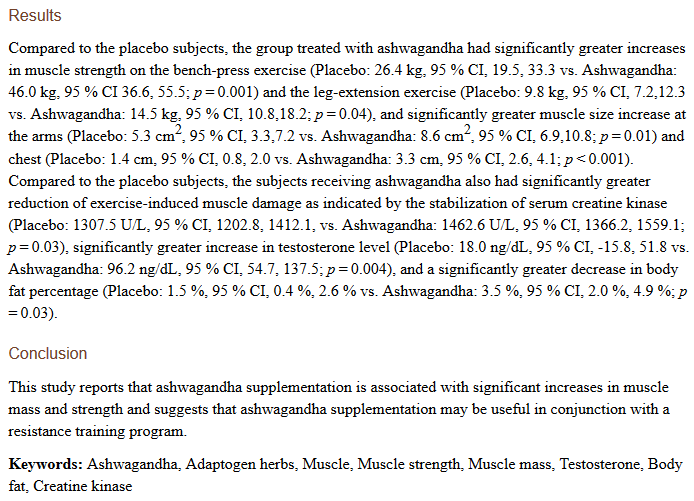
Overall vitality study finds in this 16-week, randomized, double-blind, placebo-controlled, crossover effects on fatigue, vigor, and steroid hormones middle-aged men, that 8 weeks of supplementation with an ashwagandha extract {Shoden beads, 600 mg daily delivering 21-mg withanolide glycoside} was indeed associated with significant improvements in salivary DHEA-S and testosterone production. [21]
An in-depth study on withania suggested her as a valuable natural drug for the treatment of cancers specifically carrying a p53Y220C mutation, which are the large majority of them. Using molecular docking tools and bioinformatics, they were able to test the herb against tumor suppressor p53 protein who is frequently mutated in a large majority of cancers. [22]
General wellbeing, sleep, and mental alertness during the day for elderly individuals is improved through the best ashwagandha supplementation of 600mg of extract per day. [23]
The herbs popularity also comes from the treatment of epilepsy, depression, arthritis, diabetes, and palliative effects such as analgesic, rejuvenating, regenerating, and growth-promoting effects. [24]
ASHWAGANDHA SIDE EFFECTS
Headache, sleepiness, and stomach upset have been reported in clinical studies when doses become very high. Remember to start slow with all things, rare allergic reactions are always possible.
Withania somnifera is regarded generally as very safe. [x,x]
ASHWAGANDHA EXPERIENCE
I use the shrub as much as possible, it grows at certain locations I visit it frequently. I am new to knowing her personally.
Ashwagandha ‘s History & Modern Use
Traditionally, ashwagandha has been given as a nerve tonic and adaptogen, which means as an agent to helps people adapt to various emotional and physical stressors.
It was classically used in India for nearly 5,000 years for conditions such weakness and debility in old age, hardships while young, constipation, insomnia, nervous conditions, stress, goiter, joint inflammation, parasites, hormone balance, and rheumatism – sort of a cure-all bring the overall system up herb. Good Nutritional Diversity diet plans want as many species with that feature as they can get in.
In old days a paste even made from the ashwagandha root, powdered then applied topically as a treatment to boils, cancers on the skin or gums, and other health threatening-looking tissue.
Ashwagandha is known to help people strengthen their immune systems after illness, chemotherapy, and surgery. It is a highly effective, evidence-based remedy to help reduce levels of stress and anxiety by lowering cortisol levels, and a plethora of other ways, to reach the end goal.
The scientist is quick to point out the presence of triterpene lactones, withanolides, withaferin A, alkaloids, steroidal lactones, tropine, and cuscohygrine, and other relatively powerful and recognized plant essences and chemicals realized form the laboratory dissection of the plant – something that in the pursuit of healing and performance anyway, is not necessary.
Alternative Use of Ashwagandha
Now people have matched the magic herb to a stack of conditions such as arthritis, anxiety, bipolar disorder, attention deficit hyperactivity disorder (ADHD), balance, obsessive-compulsive disorder (OCD), trouble sleeping (insomnia), tumors, tuberculosis, asthma, a skin condition marked by white patchiness (leukoderma), bronchitis, backache, fibromyalgia, menstrual problems, hiccups, tumors, tuberculosis, asthma, a skin condition marked by white patchiness (leukoderma), Parkinson’s disease, and chronic liver disease. It is also used to reduce the side effects of medications used to treat cancer and schizophrenia.
Like ginger, ashwagandha is said to reduce fat and sugar levels in the blood. A very similar list seems addressed by another shrub the same size; Ambrosia.
The soft two and a half foot shrub sometimes with small berry, is easy to grow in pots, and around the permaculture farm in sunny to partial, in dry stony earth. It has fury leaves and green parts and grows the orange to red fruit inside of a case that looks like the roof of the Kremlin, made from linen.
ASHWAGANDHA DISCUSSION
We ranked the best ashwagandha Withania somnifera, supplements to asses real source quality, refer the potent medicinal herb to clients as an alternative to other substances and to further our studies of plants and plant nutritional effects across I wider range of experiment and examination.
We looked hard at the warm looking herb whose fruits come in Kremlin-like domes that really help aerate and nutrify soil mixes, and we took time to consider what factors were important, and what factors were not while selecting the best Withania somnifera, herb source.
This is done by our company because we think one day the referrals could help us to provide this cutting edge information and because we need to find out and refer only the best product to our group of readers.
The Withania somnifera, is very applicable to the ND food combinations and ratios we have been working on in the last few years. She fits right in. We mark her high, on the demand list for our clients, permaculturists, athletes and general followers.
This is one of the ones we have spent a lot of time on.
Third-party testing of the substances available was required for ranking in this particular recommendation.
At least one hundred positive user statements are materials were the second requirement we had in this eval.
Anytime there is a good combination herb or benefits for any given substance we are sure to make mention of that. In this case turmeric for arthritis maybe jackfruit too, and damiana and or mango for energy and sexual performance and function restoration, gotu kola or dormilona (which acts more as a stimulant for me personally) for sleep and insomnia, and papaya for high-octane digestive capabilities and ginger for blood management. Black pepper, hot pepper, salt, oils and avocado can always improve uptake.
ASHWAGANDHA FAQ
Q: What is the best ashwagandha combination ND research is aware of?
A: The best damiana. The combination can be too much for some. Go slow. Haste makes waste.
Q. Can ashwagandha help me lose weight?
A. It can. If your body reacts to stress by gaining weight either through metabolic changes or through changes in appetite, the best ashwagandha can help immensely by helping to decrease stress.
Q: Does ashwagandha conflict with other herbs?
A: Surely to some degree of conflict there are a few out there, but in contrast thinking towards diversity and that natural lesson, the combinations we have found are the real focal point for this diva.
Q: Why the singing references?
A: Everybody is singing something no? I prefer honest songs. That is guaranteed in the plant world, and “if you grow them then you can know them.” They are always up for that, and they are always honest what more can you want?
Q: Is ashwagandha a topical herb?
A: One way to find out. Try it. To really get anywhere with nutrition one must remain forever experimental. Safe and logical but not totally in fear – this will get you nowhere. Fear is the Black Hole. Remember that. We will get back to you on this.
Q. What plant family is ashwagandha a member of?
A. Ashwagandha is a plant in the Solanaceae or nightshade family.
Q. What form of ashwagandha plant is it?
A. This ashwagandha plant is a short, tender perennial shrub attaining a height of 35–75 cm (14–30 in).
Q. What well known medicinal properties do ashwagandha possess?
A. The plant, particularly its root powder, has been used for centuries in traditional Indian medicine.
Q. How does ashwagandha look?
A. The ashwagandha plant has hairy branches extending radially from a central stem. Leaves are dull green, elliptic, size of which is up to 10–12 cm (4 to 5 in) long. The bell-shaped flowers are small and greenish. The fruit is orange-red.
Q. When does the ashwagandha plant mature and ready to be harvested?
A. Ashwagandha is ready to harvest in 5 to 6 months when flowers and berries start to form and leaves begin to desiccate.
Q. What kind of substance do ashwagandha also contain?
A. Ashwagandha contains withanolides, withaferin A, alkaloids, steroidal lactones, tropine, and cuscohygrine. Notably, withanolides are structurally similar to the ginsenosides of the ginseng family.
Q. What conditions are favorable for ashwagandha plants?
A. Ashwagandha is a drought-tolerant plant and grows in dry soil, once put down. Ashwagandha grows best when the temperature ranges between 70 F – 95 F (20 – 35 C).
Q. How does ashwagandha fame come about?
A. Ashwagandha is an important herb in Ayurveda, which is a form of alternative medicine based on Indian principles of natural healing.
Q. Does ashwagandha support heart health?
A. Ashwagandha has been shown to induce cholesterol- and triglyceride-lowering actions. This in turn will work for your heart, reducing cholesterol and lowering blood pressure altogether.
Q. What can ashwagandha do about the inflammation?
A. Various studies have been conducted and evidence has been pointing to that ashwagandha helps decrease inflammation by increasing the activity of natural killer cells.
Q. What other good benefits does ashwagandha give to bodies?
A. In studies, it has been shown that ashwagandha had boosted greater gains in muscle strength and size, while reducing in body fat percentage when compared with the placebo group.
Q. Does ashwagandha impact positively on male fertility?
A. It has been reported that ashwagandha increases testosterone levels and largely enhances sperm quality and fertility in men.
Q. Does ashwagandha possess calming effects?
A. Ashwagandha has been demonstrated to fight stress and anxiety in animal and human studies.
Q. Are there precautions for ashwagandha use?
A. Ashwagandha is a generally safe supplement for most people. Since its long-term effects are unknown, pregnant and breastfeeding women are advised to steer clear of its use. Autoimmune-deficient individuals, such as those who suffer from conditions like rheumatoid arthritis, lupus, Hashimoto’s thyroiditis, and type 1 diabetes should also consult with doctors before using it. It also has the effect of decreasing blood sugar and blood pressure levels, so medication dosages may need to be regulated if one takes it.
Q. What is the dosage suggested for taking ashwagandha supplement?
A. The common root extract is usually taken in 450–500-mg capsules once or twice daily.
ASHWAGANDHA RECAP
The best Ashwagandha is brain food and brain protectant.
She another anti-cancer wonder plant, and helps with overall female reproductive systems.
The magic herb may help arthritis. Use with turmeric.
She takes care of some stress too and can sing a song for insomniacs. Stabilize mood and anxiety.
This adaptogen helps people immensely with harsh, extreme, and difficult changes.
Throw some leaves from the magic herb and berry wonder in your water pitcher.
Great all-natural science-backed boost for muscle strength and recovery, as well as mass building.
Just give me the best ranked.
ASHWAGANDHA RELATED MATERIAL
Additional References,
- Deocaris CC, Widodo N, Wadhwa R, Kaul SC. Merger of Ayurveda and tissue culture-based functional genomics: inspirations from systems biology. J Transl Med. 2008;6:14
- Wermuth CG. Multitargeted drugs: the end of the “one-target-one-disease” philosophy? Drug Discov Today. 2004;9:826–827. doi: 10.1016/S1359-6446(04)03213-1.
- Patwardhan B, Warude D, Pushpangadan P, Bhatt N. Ayurveda and traditional Chinese medicine: a comparative overview. Evid Based Complement Alternat Med. 2005;2:465–473. doi: 10.1093/ecam/neh140
Originally Published Oct 19, 2019, Updated April 4 2013, Apr 4, 2020
Special Elements
Best Hot Peppers, The Many Benefits, Rankings, Side Effects & Experience
𝕻icante, or spicy hot peppers are not as popular here in South America, as they are in my hometown of Albuquerque, New Mexico,

Albuquerque Hot Air Balloon Fiesta, State Flag Balloon
which is also the hometown of the #1 International Fiery Foods Festival and also the more famous International Hot Air Balloon Fiesta.
Hot peppers have been used, cultivated, and cherished since man existed. Mostly for a good purpose, sometimes for bad.
Right away with athletic performance clients, I make sure a fiery food practice is employed. If you want a strong system overall, and you are asking me, you want to start training or progress as significantly as possible in your ability to eat the best hot peppers.
Once you have the skill it’s one you won’t want to lose. They say once you can’t take it anymore it’s hopeless you are without the spice and that’s not good.
The best hot peppers are superfoods. If you are one of the ones that thought you couldn’t but want to get back into it just go slow and keep tomatoes and tomato-based sauces out of it in the beginning. The best olive oil helps.
The love of hot peppers, and the health benefits that have been realized and enjoyed strongly dispel the notions that, if it tastes good it is best for you, or that taste is an object of edibility.
Hot peppers, especially those containing capsaicin, can offer a wide range of performance, health, and toughness benefits when included in a diet. Here’s a breakdown:
Performance Benefits
- Improved Circulation: Capsaicin dilates blood vessels, enhancing circulation and oxygen delivery to muscles during physical activity.
Metabolic Boost: Eating hot peppers can increase metabolic rate, helping with fat burning and energy production.
Endurance Support: The adrenaline rush from spicy foods can enhance focus and stamina, potentially improving athletic endurance.
Pain Tolerance: Regular exposure to capsaicin may increase your pain threshold, which can be helpful in pushing through tough workouts.
Health Benefits
Anti-Inflammatory Properties: Capsaicin has anti-inflammatory effects, helping reduce chronic inflammation, which is linked to conditions like arthritis and heart disease.
Enhanced Immunity: The high vitamin C content in peppers supports the immune system, aiding in quicker recovery from illnesses or strenuous activity.
Heart Health: Capsaicin can lower LDL cholesterol levels, reduce blood pressure, and improve overall heart health.
Digestive Health: In moderate amounts, peppers stimulate the digestive system, improving gut motility and possibly enhancing microbiome diversity.
Pain Relief: Capsaicin can desensitize nerve endings, which is why it’s often used in topical pain relief creams. Internally, this can help alleviate mild discomfort and reduce chronic pain perception.
Anti-Cancer Potential: Studies suggest that capsaicin can help slow the growth of certain cancer cells by promoting apoptosis (programmed cell death).
Toughness Benefits
Mental Toughness: Eating hot peppers regularly can train your brain to handle discomfort better, increasing resilience in challenging situations.
Endorphin Release: The initial heat from peppers stimulates the release of endorphins, the body’s natural painkillers, creating a sense of euphoria and promoting mental toughness.
Adaptation to Stress: Capsaicin activates the same stress responses as physical exercise, helping the body adapt to and recover from stress more efficiently.
Cold Resistance: Regular consumption of spicy foods has been associated with increased thermogenesis, helping you tolerate colder environments more effectively.
Other Benefits
Weight Management: The appetite-suppressing effects of capsaicin can help with calorie control, aiding in fat loss or maintenance of a lean physique.
Antioxidant Protection: Hot peppers are rich in antioxidants like beta-carotene and flavonoids, which protect against oxidative stress and support overall health.
Including hot peppers in your diet in moderation can help you tap into these benefits, making them a potent addition to a health-conscious or high-performance lifestyle.
ABSTRACT
In the garden I have grown some habanero relative peppers, the Mayan relative pepper, a little round ‘tabasco’ pepper, and a few jalapenos in the mountains, which speak for the general idea in local peppers. There are many species of best hot peppers that do well here, and really most hot peppers can do well anywhere they are fed and attended to well.
The most well-known hot variety, although not so hot here anymore, are listed as ‘Mayan’ peppers, and they are larger peppers and look like the ‘Red and Green Chile’ in New Mexico that hangs on ‘ristras.’
New Mexicans have been eating these (our local version of that can be very hot) chili peppers that grow there for thousands of years. New Mexicans I know will tell you our pepper is from there in New Mexico brought directly from God and is the super, superfood of them all, and you will read in a moment how they really are!
The main idea in the migratory plant study is that the Mayan pepper is from the traditional Aji, and from that different cultivars evolved.
Concretely, in contrast, there is really nothing to assure that this idea is true, or that the idea of New Mexico’s Hatch Green Chili is a completely different insert ofa completely different pepper either.
Some have theorized that Hatch Green Chili peppers, the best hot pepper could be behind Albuquerque dominating the UFC.
Ideas of hot foods making hot heads in history are all theoretical. Mostly the thought was spicy food love started during specific cultures that practiced developing intentional pain tolerance.
Recently, phytoliths of garlic mustard seed (Alliaria petiolata) were found in carbonized food deposits on prehistoric pottery from the western Baltic dating from 6,1 k.a to 5,7 k.a cal BP (Ertebölle Complex).
This archaeological evidence suggests much greater antiquity to the spicing of foods than previously thought within a hunter-gatherer or ancient premise.
Garlic mustard a.k.a. Hedge garlic alliaria petiolata is an inconspicuous plant, found in clumps in the lighter forest, which belongs to the Brassicaceae family of plants. It is native to Europe, Western and Central Asia, and Northwestern Africa. The leaves, flowers, and fruit are of the species are all edible.
The fruit of plants from the genus Capsicum, members of the nightshade family, Solanaceae. The name comes from the Aztec language, Nahuati.
Lunch was good!
On our own we know that eating spicy foods activates en expulsion of mucus from the system, namely in the sinuses.
This is important cleaning, and many health theories such as Arnold Ehret, a Godfather to vegetable healing have been logically formed around mucus-lessness as the real code to staying healthy.
No pain no gain can be employed here, and one can do their own experiment with that. Eat a large number of strong peppers, and on the other side of the hurt, one will find that their system is clear.
Electrophysiological records in both peripheral and central nervous systems show that the primate sensory taste system is basically organized around two major clusters of fibers and their cortical projections.
Co-variations between the neural responses to various compounds were observed for sugars, on the one hand, and for tannic acids and alkaloids. Our human taste perception system is not essentially different from that of the other primates as far as the dichotomy allowing discrimination of noxious v.s. beneficial substances through taste; clearly in the case of hot peppers not so much, nor maybe in garlic, black pepper ginger or turmeric.
Interestingly we know that two of these hard-tasting miracles, turmeric, and black pepper, are more active together and this could be similar in hot peppers.
An increasing amount of evidence shows that animals such as insects, birds, and primates use plant parts with certain categorical compounds known as ‘secondary compounds’ to improve their comfort or their health.
The concept of self-medication now generally accepted in primates but also in other vertebrates was first proposed by D.H Janzen (1978), an ecologist at the University of Pennsylvania.
Liken to the spice, bitterness is normally suggested to represent a reliable signal of toxicity for animals and humans but a number of secondary compounds are bitter tasting (Saponins, Alkaloids, and some Sesquiterpenoids, Terpenoids and Steroid Glycosides) and many of these substances possess important pharmacological activity.
Garlic mustard produces a variety of helpful secondary compounds including flavonoids, defense proteins, glycosides,
Nutritionally Diverse, Spicy Lunch
glucosinolates, particularly Sinigrin, a breakdown product allyl- isothiocyanate (AITC) that reduce its palatability to herbivores.
The chili plant seed is broken down by humans and primates whose taste receptors are burned, but the bird’s digestive tract does not break down the seed nor does the bird spit it out, from any taste reaction because it does not have the primal dichotomy of dissemination as an obstruction to his interest in the seed.
The plant should be well propagated by the bird gardener members of a miraculous human-inspired permaculture somewhere.
Popular Science and many others have had a very difficult time deciphering the love of chili eating, but well recognized that many do love it, and to them, it’s a deep passion. Chili is still the word for the plant pepper as it was for the Mayans and the Aztecs who may have been the one who gave it that name.
“Acceptance of food depends not only on taste, but also on olfactory, tactile and visual signals, as well as memories of previous, similar experiences and social expectations. Food palatability and hedonic value therefore play central roles in nutrient intake. As a result, ancestral humans who liked spicy food—and therefore gained from its health benefits—might well have had longer, healthier lives and more offspring” (Nilius & Giovanni 2011)
Paul Sherman, a professor of neurobiology and behavior at Cornell University in Ithaca, New York has research that shows people in warmer regions of the world benefiting from eating spicier foods, because of the fiery peppers are natural antimicrobials.
Food-born pathogens and parasites are more populated in warmer climates, and spices can kill or inhibit their growth.
The spicy research presented in National Geographic (2005) sited that in the same region of Thailand one culture who eats blander foods, ( less spicy) does experience more diarrhea and infections.
Paul went on to find out that hotter cultures ate the hotter foods, and colder ones ate less spicey foods, interestingly the germ stopper is less popular where it is not needed, such as in cold climate places.
Albuquerque, nestled into the foothills of the Rocky Mountains, must be the exception.
Here are the rankings for the best hot peppers, you can order to your door.
HOT PEPPER RANKINGS
Heat Ranking
As of January 2025, here is a list of the top 20 hottest peppers in the world, heat ranked by their Scoville Heat Units (SHU):
Pepper X: 2,693,000 SHU
Developed by Ed Currie, Pepper X holds the Guinness World Record as the world’s hottest chili pepper since 2023.
Wikipedia
Carolina Reaper: 2,200,000 SHU
Created by Ed Currie, the Carolina Reaper was the previous record holder for the world’s hottest pepper.
Wikipedia
Dragon’s Breath: 2,480,000 SHU (unofficial)
Developed in the United Kingdom, Dragon’s Breath has an unofficial SHU of 2,480,000.
Wikipedia
Trinidad Moruga Scorpion: 2,009,231 SHU
Originating from Trinidad and Tobago, this pepper was once recognized as the world’s hottest.
Wikipedia
7 Pot Douglah: 1,853,936 SHU
Also known as Chocolate 7 Pot, this pepper is native to Trinidad and Tobago.
Pepper Johnny
Komodo Dragon: 1,400,000 SHU
Developed in the United Kingdom, the Komodo Dragon chili is known for its delayed heat.
Rockadoodledo
Naga Viper: 1,382,118 SHU
A hybrid chili pepper created in the UK by crossing three of the world’s hottest peppers.
Rockadoodledo
Ghost Pepper (Bhut Jolokia): 1,041,427 SHU
Originating from India, the Ghost Pepper was once the world’s hottest chili.
Rockadoodledo
7 Pot Barrackpore: 1,000,000 SHU
Part of the 7 Pot family, this pepper is known for its extreme heat.
Rockadoodledo
Infinity Chili: 1,176,182 SHU
Developed in the UK, the Infinity Chili briefly held the title of the world’s hottest pepper in 2011.
Rockadoodledo
7 Pot Brain Strain: 1,350,000 SHU
Known for its brain-like appearance, this pepper is a variety of the 7 Pot chili.
Rockadoodledo
Dorset Naga: 1,000,000 SHU
A variant of the Naga Morich pepper, developed in Dorset, England.
Rockadoodledo
Trinidad Scorpion Butch T: 1,463,700 SHU
Once the world’s hottest pepper in 2011, developed in Australia.
Wikipedia
7 Pot Primo: 1,473,480 SHU
Known for its long, skinny tail, this pepper was created by horticulturist Troy Primeaux.
Pepperhead
Chocolate Bhutlah: ~2,000,000 SHU
A cross between the Ghost Pepper and the 7 Pot Douglah, known for its intense heat.
Grow Hot Peppers
Red Savina Habanero: 350,000–577,000 SHU
Once recognized as the hottest chili pepper in the world from 1994 to 2006.
Rockadoodledo
Fatalii: 125,000–325,000 SHU
Originating from Central and Southern Africa, known for its citrusy flavor and intense heat.
Rockadoodledo
Scotch Bonnet: 100,000–350,000 SHU
Native to the Caribbean, commonly used in jerk seasonings and hot sauces.
HomeDiningKitchen
Bird’s Eye Chili (Thai Chili Pepper): 50,000–100,000 SHU
Commonly used in Thai and Southeast Asian cooking, known for its intense heat.
HomeDiningKitchen
Cayenne Pepper: 30,000–50,000 SHU
A staple in many spice racks, often used to add heat to dishes like soups and stews.
HomeDiningKitchen
Please note that the Scoville Heat Units (SHU) can vary based on growing conditions and testing methods.
Nutrient Density Ranking
New Mexico green chiles are a nutrient-rich addition to your diet, offering notable amounts of vitamins and minerals. Here’s how they compare to other hot peppers in terms of nutritional density:
Nutritional Profile of New Mexico Green Chiles
Vitamin C: A ¼ cup (57g) serving provides approximately 36 mg of vitamin C, fulfilling about 40% of the recommended daily value.
Eat This Much
Vitamin A: The same serving offers around 60 µg of vitamin A, accounting for about 7% of the daily value.
Eat This Much
Iron: Contains approximately 0.4 mg per ¼ cup, contributing to about 4% of the daily value.
Eat This Much
Dietary Fiber: Provides about 1 g per serving, which is 4% of the daily value.
Eat This Much
Revised Ranking of Hot Peppers by Nutritional Density
Considering the nutritional content of New Mexico green chiles, here’s an updated ranking:
Red Bell Peppers: Extremely high in vitamin C (169% DV per 100g) and vitamin A.
New Mexico Green Chiles: High in vitamin C (40% DV per 57g) and a good source of vitamin A and iron.
Habanero Pepper: Rich in vitamin C, vitamin A, and potassium.
Jalapeño Pepper: Good source of vitamin C, vitamin B6, and antioxidants.
Cayenne Pepper: High in vitamin A, vitamin E, and vitamin C.
Serrano Pepper: Contains vitamin C, vitamin A, and capsaicin.
Tabasco Pepper: Rich in vitamin C, vitamin E, and calcium.
Trinidad Moruga Scorpion: High in capsaicin and contains vitamin C and beta-carotene.
Anaheim Pepper: Good source of vitamin C, vitamin A, and moderate capsaicin levels.
Poblano Pepper: Provides vitamin C, vitamin A, and iron.
Incorporating New Mexico green chiles into your meals can enhance flavor while boosting your intake of essential nutrients, particularly vitamins C and A.
HOT PEPPER BENEFITS
Studies showed that eating spicy foods was the factor behind a 14% decrease in overall mortality, compared to folks who can’t take the heat [2]. Capsicum has positive vascular and metabolic effects, this makes it also very important to a Nutritional Diversity diet. [3] 💋
HOT PEPPER SIDE EFFECTS
Hot chili peppers can burn you, is several places, the worst one is the eyes or private areas. Make sure to wash your hands when handling the fire fruits. To some and depending on the current diet they can cause over-acidity.
HOT PEPPER EXPERIENCE
I am in the Caribbean right now, on an island in Panama known as Bocas del Toro, a great place for permaculture farming, where there are some famed hot sauces but it’s not necessarily somewhere I would send a firey food lover. Bocas sauce is hot, but not that hot, and it does have a mustard seed base. Barbados had some great hot stuff too.

There are a few hot sauces of weight here for sure and across Central and South America a few more. I have had some solid stuff, and there are surely some murderous hot peppers growing quite well here in the tropics, and proudly many types at our own small family farm.
HOT PEPPER DISCUSSION
Tough Guys Eat Spicy Food :
1932, the Soviet Union sent one of its best agents to China, a former schoolteacher and counter-espionage expert from Germany named Otto Braun.
His mission was to serve as a military adviser to the Chinese Communists, who were engaged in a desperate battle for survival against Chiang Kai-shek’s Nationalists.
The tale of Braun’s adventures in the Chinese Communist revolution is packed with enough twists and turns for a big-screen thriller. In the clutch of culinary history, one quote from Braun’s autobiography recalls his first impressions of Mao Zedong, the man who would soon go on to become China’s Emperor.
“The food of the true revolutionary is the red pepper,” declared Mao. “And he who cannot endure red peppers is also unable to fight.”
I love this story, and I believe the quote is accurate. I don’t let the young men around me off easy for eating a bland plate of food, and I will have my own hot something with me, even if their household is unprepared, always. “Real Tough Guys Eat Spicy Food,” is one of the things they may hear me say.
I know, coming from Albuquerque New Mexico, where we love our Green Chili more than our … it’s a long-lasting positive relationship that never goes bad.
I thought for the longest time there would be no way I could ever live without the stuff. It really was that important to me, I am close to finding some imports or doing a dedicated climate control space to grow some of my own here but sadly at this time I miss her.
I am able to find a few good hot peppers here in Panama though.
Science now finds connections to neurological and hormonal endorphin releases in the hot peppers as well as other reactions that affect our happiness and our senses in life.
The NAUTILUS company published an article last year (Andrew Leonard 2016) entitled “Why Revolutionaries Love Spicy Food,” which explains basically that firey people like firey food, and that there is a link between the chili pepper and risk-taking.
Christopher Columbus on Jan. 1, 1493, recorded in his diary, his discovery of the chili pepper, on the Caribbean isla of Hispaniola,“the pepper which the local Indians used as spice is more abundant and more valuable than either black or melegueta pepper [an African spice from the ginger family].”
A Sichuanese folk saying goes: “Spicy peppers are the meat of poor guys.” Sichuan people an already hot eating people were the main group that adopted the chili pepper significantly when Columbus first imported it to Europe and Asia. Poor guys are usually tougher guys.
The chili pepper plant is a strong grower, easy to cultivate, productive crop. High in A, B, and C’s vitamin spread of nutrition, sure to keep the body and immune system tough and ready.
Shark’s Fin and Sichuan Pepper, y Fuchsia Dunlop, an author of Chinese cookbooks, says that the region’s passion for spice is explained by the intersection between climate and traditional Chinese medicine: “In terms of Chinese medicine, the body is an energetic system, in which damp and dry, cold and hot, yin and yang, must be balanced.”
In the mid-70’s a study of the pepper craze in Oaxaca, Senior Rozin of the University of Pennsylvania determined that the act of eating chili peppers is an acquired taste in Mexico.
Children do not come out of the womb craving a scorching hot cuisine. They’re encouraged, by their families, to handle the chili’s burn with small doses that gradually increase.
In describing the variance between heavy hitter hot mouths and the light roaster, Rozin came up with a theory he called “benign masochism.” A certain type of person, he theorized, was lured to the burn, the same kind of person, he suggested, who might be drawn to other “sensation-seeking” activities.
Surprising amounts of sources word the chili peppers effect by saying the chili gives a mild ‘high.’
During the Sino-Japanese War between 1937-1945, of the 1,052 generals and marshals who served in the early ranks of the People’s Liberation Army, a whopping 82 percent hailed from China’s four spiciest provinces is pointed out by an essay from Hongjie Wang, an associate professor of history at Armstrong State University in Georgia.
Wang specializes in Sichuan culture, and in his essay, “Hot Peppers, Sichuan Cuisine and the Revolutions in Modern China,” he writes of one contemporary Chinese cultural observer who called Sichuan’s inherent “potential for rebellion, so beautiful and marvelous.” In 1911, according to Wang, a protest against “imperialist” control of newly constructed railroads in Sichuan triggered national unrest that ultimately led to the fall of the Qing Dynasty.
One could make the case that Sichuanese hot tempers set in motion the entire process of China’s modern political development. Anecdotal in the language of Sichuan, Wang scribes, “eating spicy food has come to be regarded as an indication of such personal characteristics as courage, valor, and endurance, all essential for a potential revolutionary.”
In a cultural list of the spiciest food geography, the “Spicy Quest” came up with the following red zones:
- South Asia (India, Sri Lanka, Bangladesh, Polynesian SE Asia (Indonesia, Malaysia, Brunei),
- Buddhist SE Asia (Thailand, Laos, Burma, Vietnam),
- Himalayas (Bhutan, Nepal, Sikkim, Tibet?),
- China (Sichaun and Hunan provinces),
- Indigenous South America (Bolivia, Ecuador, Amazon),
- American Desert (US Southeast, New Mexico, Mexico),
- Korea Peninsula Sphere (Korean regions in China, Korea, and Russia, nearby Japanese and Chinese islands),
- East Mediterranean (Syria, Lebanon),
- Southern Africa (South Africa, Mozambique), Balkans, North Africa (Tunisia),
- West Africa (Guinea, Cameroon, Nigeria, Senegal, Liberia),
- and the Caribbean (Trinidad, Jamaica).
A hot food eater identity is reasonably a daring individual who may like pain. Personality types class in the risk-taking, nomads on the move who can carry a cheap and easy-to-grow option for adding flavor to a constrained diet. Or they are from a hot and humid climate, where microorganisms grow, or strongly favoring a yin and yang medical philosophy.
can carry a cheap and easy-to-grow option for adding flavor to a constrained diet. Or they are from a hot and humid climate, where microorganisms grow, or strongly favoring a yin and yang medical philosophy.
The reasoning I like the best is those that believe the hot pepper is a source of courage and energy and makes them tough.
Certain indications point to fiery citrus combinations as being powerful pre-workout employs. This is not an advised combination for those building their tolerance to spicy food, but for advanced practitioners.
I can testify to you that real tough guys eat spicy food, that chili peppers are muscle food, and healthy food and that my people have bee eating and growing this food right where I was born and raised, under the red skies. 100% 505, (Hatch) is something I am very proud of, and what every Albuquerque born stud can tell you, is we love our Green Chili – and we love it so much that we will fight about it. 😀
A Spicy Chocolate Food of the Gods
The Food of the Gods, of the Mayan and Azteca cultures; referring to their invented substances are usually ingested as a drink, chocolate was a mix that at that time called XOCOLATL: (SHOW-CO-LA-TIL) included hot peppers, a type we ave called for a long time now, “chili peppers.”
Spicy Food is For Tough Girls Too!
Holly Holm is shining athletic star that surely eats hot peppers and fiery food every day, and has dominated the Ultimate Fighting Championship women’s divisions, for years now after obtaining about every boxing belt she possibly could have before making the MMA switch at age 30.I figure if you eat enough hot peppers you can almost kind of be like her; from Albuquerque (cause that is the real secret).
In a video of the pop song “La Mei zi” by Hunanese singer Song Zuying, who lives in a firey foods culture in Asia, is seen surrounded in scores of young, red-clad Chinese women frolicking amid a harvest of heaps of chili peppers, as Song Zuying sings:
As children, spiciness is not the spicy girls’ fear
As adults, spicy girls don’t fear the heat
Getting married, spicy girls fear that things might not be spicy enough.
In everything I do since her birth, I keep my daughter in mind, and so now that she follows the site regularly and I hope the diet too, she can start eating spicy foods, cause I know the people of her geographic region- and they are nowhere near as tough as Duke City people not even close, and I know they don’t have much hot stuff going on either, so she will have to go search out hot peppers.
Simply Go Spicy: Eat the hottest things you find on everything you eat, and you’ll be tougher all the way through those who do not. Life is just one big fight, what kind of champion, what kind of character, are you going to build? Yes, I already know and you do to: A Hot One!
HOT PEPPER FAQ
Q. Where is the traditional U.S. hot pepper native to?
A. The origin of this hot pepper has been traced to Mexico.
Q. What form does the traditional U.S. hot pepper plant grow to?
A. Hot pepper is a plant that grows on average between 3-4 feet in height.
Q. Which plant family hot pepper belongs to?
A. Hot pepper is a member of the 30 species of flowering plants in the nightshade family.
Q. What temperature range is best for hot pepper growth?
A. Hot pepper thrives well somewhere between 60°F/16°C and 90°F/32 °C.
Q. How does the hot pepper plant look?
A. Hot pepper bears white flowers and matures by forming fruits of different colors.
Q. When does the hot pepper plant blossom?
A. The white flowers typically only last several days. Hot pepper flower self pollinates and upon successful pollination, it would bear fruits.
Q. Where is the name hot chili pepper coming from?
A. it originates from Nahuatl chīlli
Q. What varieties of uses exist for hot peppers?
A. Chili pepper can be consumed raw, cooked, dried, or added as the primary ingredient in powders and sauces.
Q. What are some known medical uses for this hot pepper plant?
A. Hot pepper relieves nose congestion, lowers blood pressure, relieves natural pain, boosts immune functions, and induces red blood cell count.
Q. What gives chili pepper its spicy properties?
A. The chemical that endows this fruit is called capsaicin.
Q. How long does hot pepper take to mature?
A. Many varieties of chili peppers take 75 days or more to mature.
Q. How to grow hot pepper?
A. The best way is to transplant once seeds germinate in 2 weeks and move to the outside soil. Hot pepper likes plenty of sun and well-drained soil is a prerequisite.
Q. What are natural pests associated with this hot pepper plant?
A. Hot pepper is susceptible to cutworms, aphids, beetles, whiteflies, fungus.
Q. What is the seasonal behavior of hot pepper?
A. Most species of hot pepper last for one season only.
Q. What is the production amount of hot pepper worldwide?
A. Worldwide figure from 2014 recorded 32.3 million tons of green chili peppers and 3.8 million tons of dried chili peppers were produced.
Q. When is the earliest evidence that chili peppers were consumed and used by humans?
A. Chili peppers have entered the human diet in the Americas since at least 7500 BC.
Q. What other nutrients does hot pepper contain?
A. Red chili peppers contain large amounts of vitamin C, while other species contain copious amounts of vitamin A beta-carotene.
Q. Which part of the hot pepper plant contains the spiciest fruits?
A. The part of the chili pepper plant closest to the stem is usually the spiciest part for it has the highest concentration of capsaicin.
Q. Which countries produce the most amount of chili peppers?
A. Top producers rank as follows: China, Mexico.
Q. What other novel use of the chemical extracted from chili pepper?
A. Capsaicin extracted is used to fabricate pepper spray and tear gas as chemical irritants, deployed in self-defense and crowd control.
HOT PEPPER RECAP
Hot peppers are regular parts of our diets here, and we believe they make you strong.
They are some of the filthy few at the grocery store though because usually farmers use a lot of chemicals to grow them – grow your own.
Just give me the best hot pepper, please!
RELATED MATERIALS
Published Feb 21, 2018, Updated Sep 16, 2019, Feb 9 2020, Oct 22, 2022
-
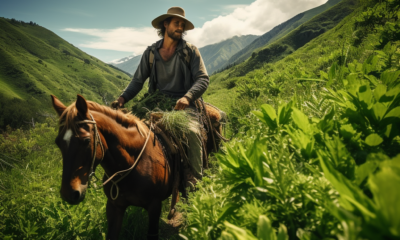
 Agriculture2 years ago
Agriculture2 years agoWhy Small Alternative Tropical Agriculture is the Best Investment Today
-

 Special Elements6 years ago
Special Elements6 years agoBest Garlic Vine Rankings, Benefits, Side Effects & Experience
-

 Special Elements3 years ago
Special Elements3 years agoBest Pre-Workout Supplement Rankings, Benefits, Side Effects & Experience
-
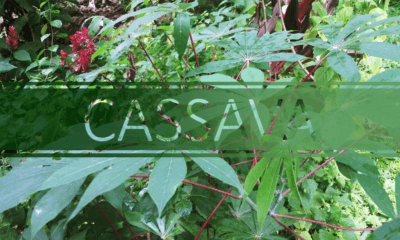
 Special Elements3 years ago
Special Elements3 years agoBest Cassava Manioc, Rankings, Benefits, Cancer Cure & Experience
-

 Special Elements3 years ago
Special Elements3 years agoBest Glutamine Rankings, Benefits, Side Effects & Experience
-
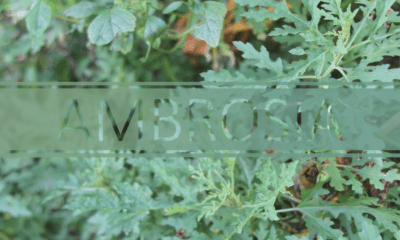
 Special Elements5 years ago
Special Elements5 years agoBest Ambrosia, Wormwood Rankings, Benefits, Side Effects & Experience
-
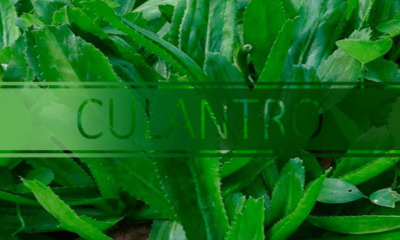
 Special Elements6 years ago
Special Elements6 years agoBest Culantro Rankings, Benefits, Side Effects & Experience
-
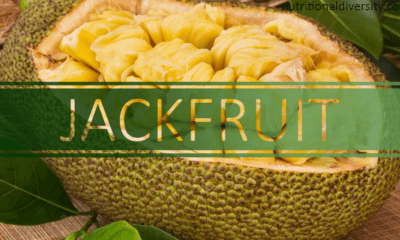
 Special Elements5 years ago
Special Elements5 years agoBest Jackfruit Rankings, Benefits, Side Effects & Experience








